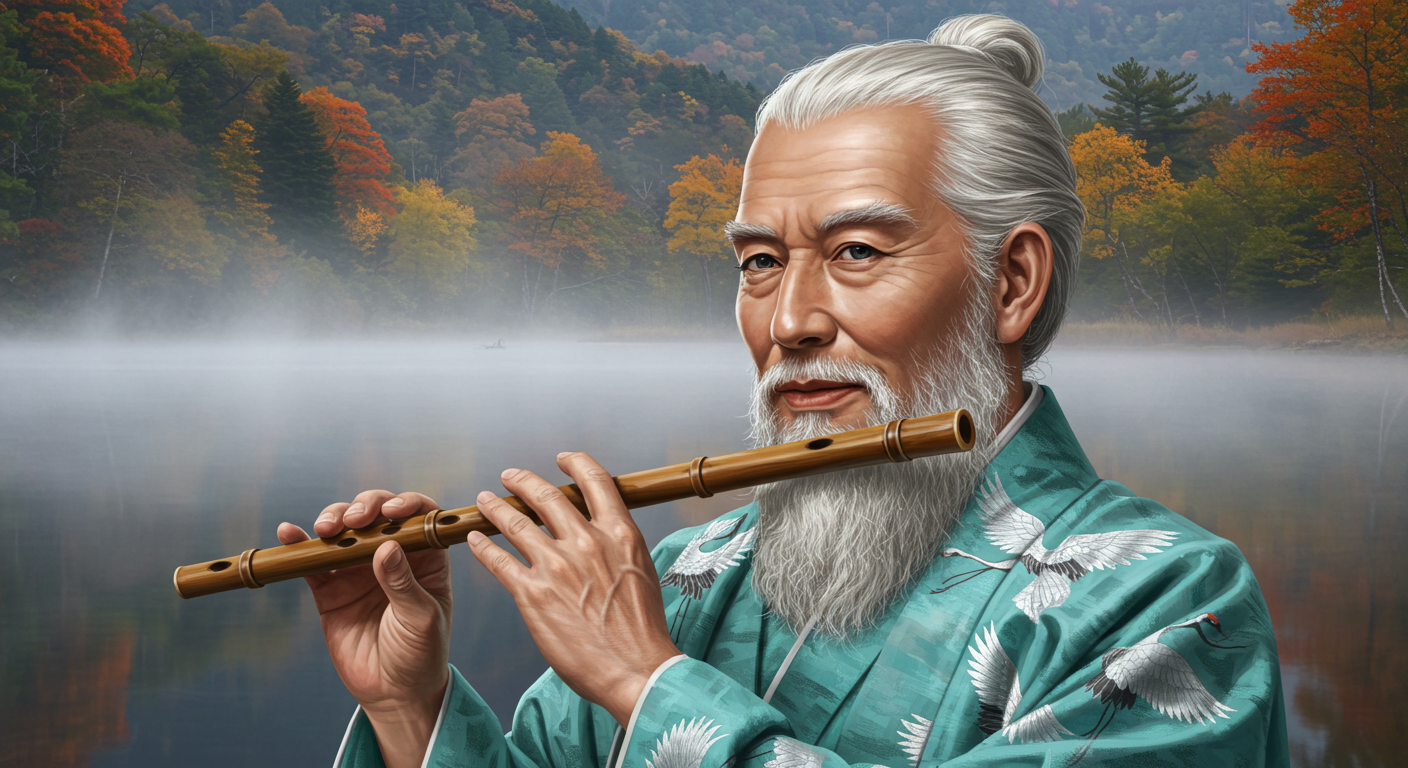I still remember the first time I listened to famous shakuhachi music, and immediately, the delicate bamboo tones washed over me, slowing my racing thoughts. In that moment, I realized how profoundly this music could influence meditation and inner calm. Not only did the melodies fill the room, but they also created a space for reflection, breathing, and presence.
Moreover, listening to shakuhachi is not just about hearing notes; it is about feeling each breath, each pause, and every subtle variation in tone. Over time, I discovered that certain pieces could guide my mood, deepen meditation, and even spark insight into my emotions. Therefore, these compositions became an essential part of my daily mindfulness practice.
Understanding Shakuhachi Music and Its Meditative Power
The shakuhachi is a traditional Japanese bamboo flute. Historically, monks used it to accompany Zen meditation practices called suizen, or “blowing meditation.” Its design allows for delicate tone variations, making every note feel alive and organic.
In addition, famous shakuhachi music encourages slow, mindful breathing. Personally, a single piece can reduce tension, quiet mental chatter, and create a deep sense of calm. Many meditators describe shakuhachi music as “breathing made audible,” and I completely agree. As a result, listening to these compositions reminds you to pause, reflect, and remain present.
Famous Shakuhachi Compositions to Explore
Over the centuries, several compositions have gained recognition for their calming and meditative qualities. Here are some pieces that have shaped my own meditation practice:
1. Famous Shakuhachi Music: Honkyoku – The Spiritual Solitude
Honkyoku pieces are traditional solo works performed by Zen monks. They emphasize breath, silence, and subtle tonal changes.
When I listen to Honkyoku, I feel a profound connection to stillness. The slow unfolding of each note encourages mindfulness and introspection. Additionally, starting my morning meditation with Honkyoku always sets a grounded tone for the day.
2. Kokū – Empty Sky
Kokū, meaning “Empty Sky,” is one of the most celebrated famous shakuhachi music pieces for meditation. Its simplicity conveys a vast sense of calm.
Whenever I play Kokū or listen to it, my thoughts naturally slow. The pauses between notes are as important as the tones themselves, creating spaciousness in the mind. Therefore, this composition reminds me that silence is just as meaningful as sound.
3. Shin Kyorei – Heart of Zen
Shin Kyorei, meaning “Heart of Zen,” is a reflective piece often used in deep meditation. Its melody feels like a conversation between breath and bamboo.
I usually listen to this piece in the evening. After a stressful day, Shin Kyorei helps me release tension. Moreover, it reminds me that meditation is about letting go, not controlling thoughts.
Zen Philosophy: Unlock Peace and Transform Your Mind
4. Isshin – One Heart
Isshin emphasizes the unity of body and breath. Its flowing lines invite gentle movement and relaxation.
During meditation, I sometimes close my eyes and let Isshin guide my breath. The melody mirrors the rhythm of my heartbeat, creating harmony between my inner and outer world. Therefore, this piece has become my favorite for reflective sessions.
How to Use Famous Shakuhachi Music for Meditation
1. Choose a Quiet Space
Even the most calming shakuhachi pieces lose their effect in noisy environments. I always find a quiet room or outdoor spot for listening. This helps the music guide focus rather than compete with distractions.
2. Synchronize with Your Breath
Shakuhachi tones naturally encourage mindful breathing. In my experience, inhaling and exhaling along with the melody deepens meditation quickly. Furthermore, this practice strengthens awareness of body and mind.
3. Let Go of Expectations
Don’t worry about “meditating perfectly.” The goal is presence, not performance. Thoughts may drift, but returning gently to the music refocuses the mind. Therefore, patience is essential when practicing meditation with shakuhachi music.
4. Make It a Daily Practice
Even five minutes a day with famous shakuhachi music can create lasting effects. Over time, these compositions signal your mind and body that it’s time to relax and reflect. In addition, consistent practice enhances mindfulness throughout the day.
Personal Reflections on Famous Shakuhachi Music
I have tried many meditation methods, but shakuhachi music has a unique intimacy. Unlike digital recordings or guided sessions, shakuhachi sounds feel alive. Each note carries subtle imperfections, reminding me that life itself is imperfect and beautiful.
One evening, after a long day, I played Kokū on my balcony. The notes mingled with distant crickets. I felt my stress dissolve. Consequently, famous shakuhachi music doesn’t just calm—it transforms the space around you and within you.
Over time, I associated certain compositions with different moods: one for morning focus, one for evening release, and one for introspective moments. Each piece guides me differently but always returns me to a sense of inner peace.
Combining Shakuhachi Music with Other Meditation Practices
Mindful Breathing
Try inhaling with long notes and exhaling in silence. The rhythm of shakuhachi naturally slows your breath. In addition, this practice enhances focus and presence.
Gentle Yoga or Stretching
Playing shakuhachi music during light yoga enhances body awareness. Movements and melodies flow together harmoniously. Furthermore, combining them increases the sense of calm and balance.
Visualization
Listening to Kokū or Shin Kyorei, I visualize open skies or calm rivers. The music guides imagery effortlessly, deepening meditation without forcing focus. Therefore, your mind becomes more receptive to reflection and mindfulness.
Tips for Selecting Famous Shakuhachi Music
- Start with Solo Pieces – Honkyoku solos are perfect for beginners.
- Consider Length – Some compositions last 15–20 minutes; choose based on your available time.
- Focus on Tone – Slower, softer pieces usually promote deeper meditation.
- Experiment – Different pieces resonate with different moods. Maintain a playlist for morning, afternoon, and evening.
Why Famous Shakuhachi Music Is Timeless
What makes these compositions enduring is simplicity and emotional depth. Unlike complex modern instruments, the shakuhachi communicates directly through breath and tone.
No matter how busy my mind is, listening to shakuhachi music brings me back to the present. Its timeless melodies connect me to centuries of Zen practice, reminding me that inner peace is always accessible.
Conclusion on Famous Shakuhachi Music
Exploring famous shakuhachi music has been transformative. From Kokū’s haunting tones to Shin Kyorei’s reflective lines, these compositions guide calm, mindfulness, and emotional release.
Listening doesn’t require mastery—just presence and openness. Each melody becomes a meditation guide, helping the mind settle and the heart breathe. Personally, these pieces have reshaped how I approach stress, reflection, and self-awareness.
If you’ve never experienced shakuhachi music, I encourage you to listen today. Even a few minutes can create a peaceful, reflective state unlike any other.
Visit : Soojz | The Mind Studio






